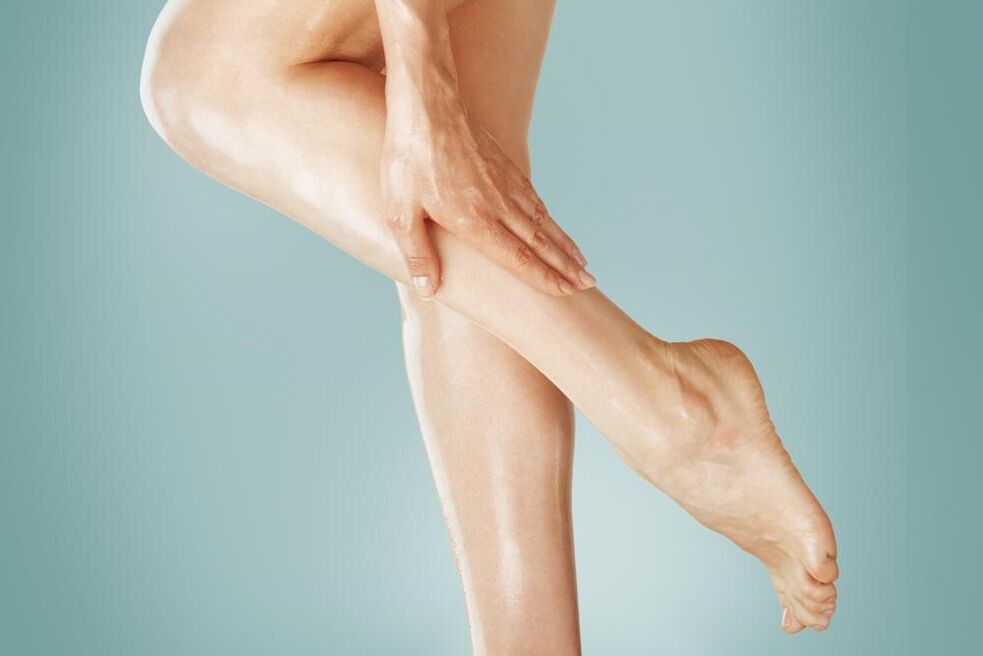
Varicose veins are one of the most common diseases in which the diameter of the lumen of the vein expands and its walls become thinner, causing the appearance of "nodes", which are local aneurysm-like expansions.
The disease occurs when the venous valves do not perform their functions or are completely absent. When the valves stop working, blood begins to flow into the veins in the opposite direction, gradually accumulating in the lower limbs. As a result of these pathological processes, the vein changes its normal shape, after which various complications begin.
Varicose veins are a fairly common disease. According to statistics, 1/3 of the world population has it. Therefore, if a patient is diagnosed with varicose veins in the legs, what is this question does not arise. Half of the patients in the first phase are not even aware that they have a problem.
Varicose veins in men on the legs are 3 times less common than varicose veins in women. Also, older women get sick much more often. Under the age of 25, only 8% of women suffer from varicose veins, while in patients over the age of 55 the disease is diagnosed in 65% of cases.
Symptoms and signs of pathology
Symptoms of the disease can vary significantly depending on its stage. Hence, in the initial stage, it can be asymptomatic. Sometimes dilated veins are visible to the naked eye, but there are no symptoms. With varicose veins, some patients always protrude, and some of them become visible only after doing serious physical activity. Many people notice signs of varicose veins after spending all day on their feet in hot weather.
Note! If you find yourself with thickened veins with nodular dilations, if they swell when you stand and shrink when you lie down in a horizontal position, then most likely it is varicose veins in your legs.
Symptoms of varicose veins include leg swelling, which occurs when a person is sitting, standing, or exercising. In this case, the swelling usually disappears as soon as the patient takes a prone position.
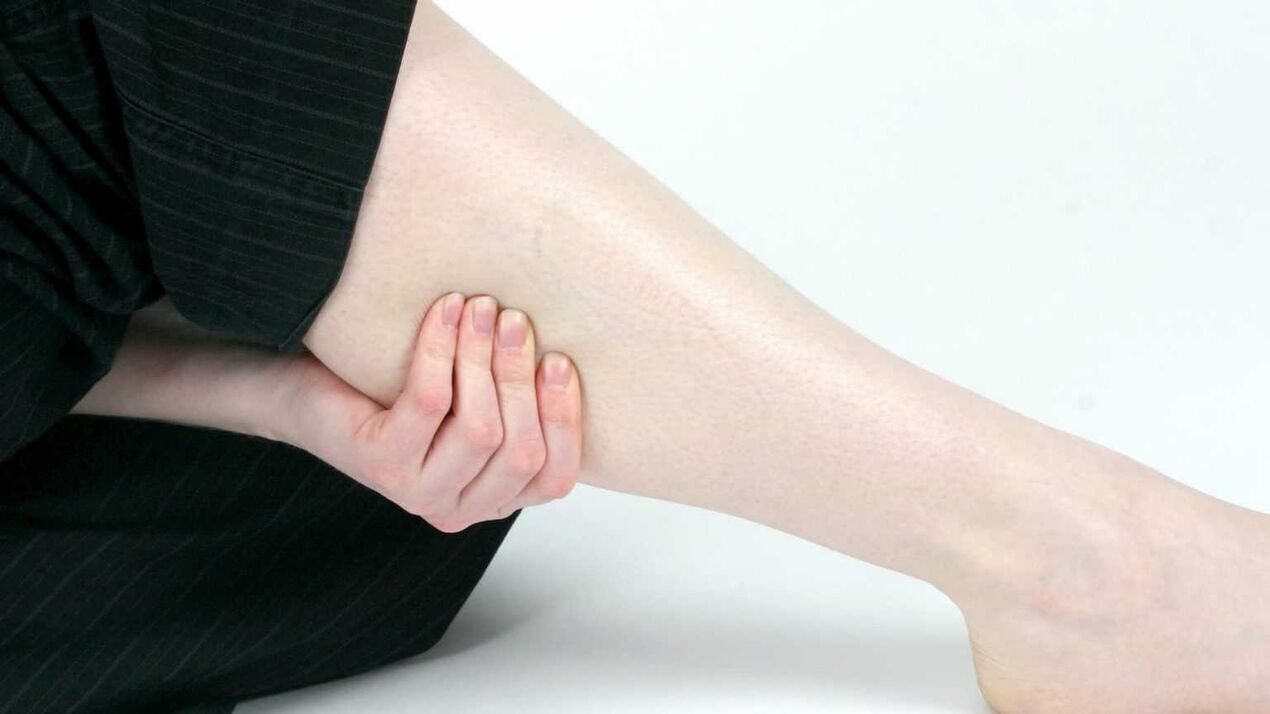
Another sign of the disease is pigmented areas of the skin from the inside of the lower leg. The skin in this place acquires a painful shine, the hair in this area almost always falls out.
Characteristic signs are also chronic leg fatigue, heaviness and burning. Some people experience pain with varicose veins and cramps. In this case, patients wear stockings for varicose veins.
Causes of the disease
As a rule, varicose veins occur in people who, by virtue of their profession, are forced to stand for a long time, for example, teachers, hairdressers, cooks. It is important to understand that varicose veins are not just a cosmetic defect that upsets many of the fair sex.
Varicose veins are a pathology that develops over a long period of time. And this happens under the influence of various adverse factors.
Among the main causes of the disease, doctors distinguish:
- excess body weight;
- violations of the digestive system, frequent constipation;
- flat feet;
- weakening of the tone of muscle fibers due to a sedentary lifestyle;
- great physical activity;
- weightlifting;
- constant tension of the leg muscles.

At the same time, doctors who treat varicose veins consider excess weight to be the main reason for the development of pathology. It creates a strong load on the legs, as a result of which blood circulation worsens.
Inflammatory diseases of the reproductive organs in women, endocrine disorders, prolonged stress, poisoning with toxins and a genetic factor can also lead to varicose veins.
Unfortunately, congenital diseases of the venous valves are transmitted from parent to child in 70% of cases. If one of the parents has varicose veins, the child can get sick at an early age.
Note! The presence of a predisposition to varicose veins does not 100% mean that a person will develop this disease. Pathology can occur only in the presence of concomitant adverse factors.
Varicose veins in pregnant women
Many pregnant women face such a problem as varicose veins. They constantly feel fatigued, their legs swell and hurt. According to statistics, circulatory disorders during pregnancy develop in 20-40% of patients.
The first symptoms of pathology in 20-30% of women occur during the first pregnancy and in 40-60% during the second. After 3 births, the risk of developing pathologies increases by 80%. At the same time, women who have a predisposition to this disease often suffer from varicose veins. This situation is aggravated by the fact that pregnant women should not take pills for varicose veins. In this case, the doctor can only recommend proper nutrition and tights for varicose veins.
Treatment of varicose veins at home
Faced with this disease, patients understand that the treatment will be long and the first thing they are interested in is the question: "Varicosis in the legs: how to cure? ".
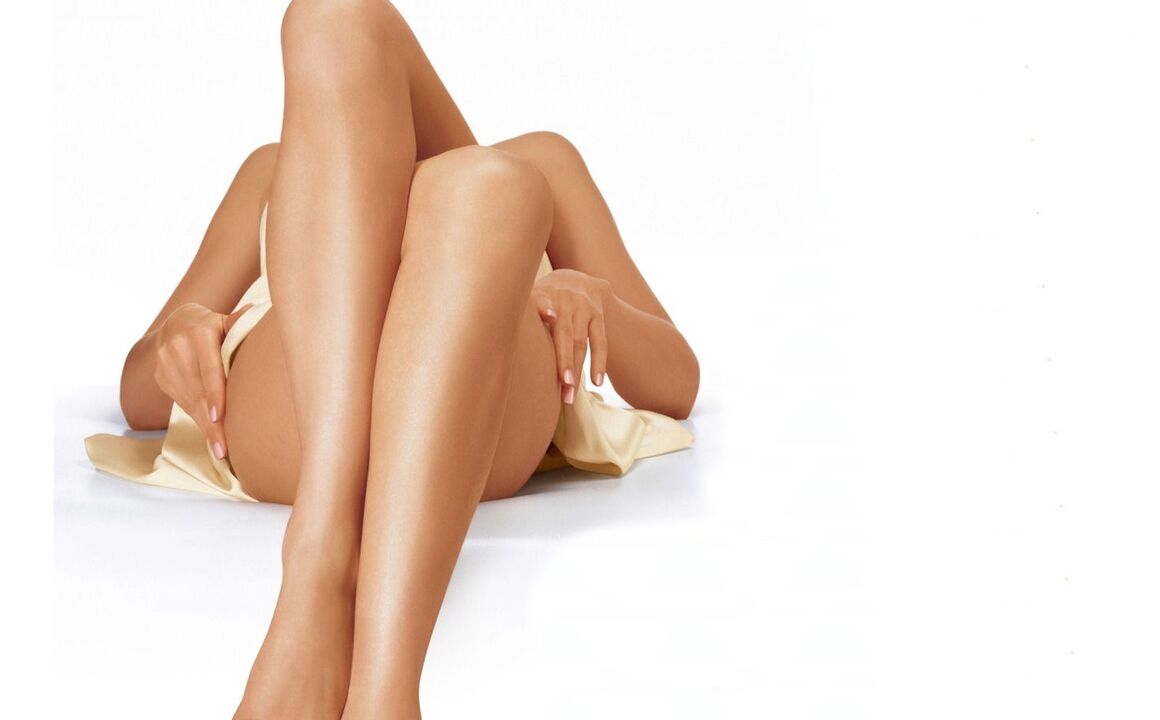
To begin with, you should answer the question, is it possible to self-medicate with such a serious disease? After all, this is a serious pathology, at the first signs of which it is recommended to consult a doctor. Only a doctor will be able to correctly determine the stage of the disease and prescribe the most effective treatment, help you choose socks for varicose veins.
However, in some cases, doctors themselves even recommend treating the disease at home. These activities should include therapeutic exercises, the use of various ointments and tinctures. Also, it is highly recommended to use compression garments for varicose veins.
To relieve the unpleasant symptoms of the disease, you can daily wipe the affected areas with ice cubes or take cold baths with ice for 5-10 minutes. After that, it is recommended to lie down for 10 minutes, lifting the legs above the body. Massage is very useful for varicose veins. Improves venous circulation.
Also, you can use the following recipes.
Decoction of hop cones
To prepare the medicine, pour 1 tbsp. L. hop cones with a glass of boiling water and let it brew in a warm place for 20 minutes. This remedy for varicose veins should be drunk every morning 30 minutes before meals.
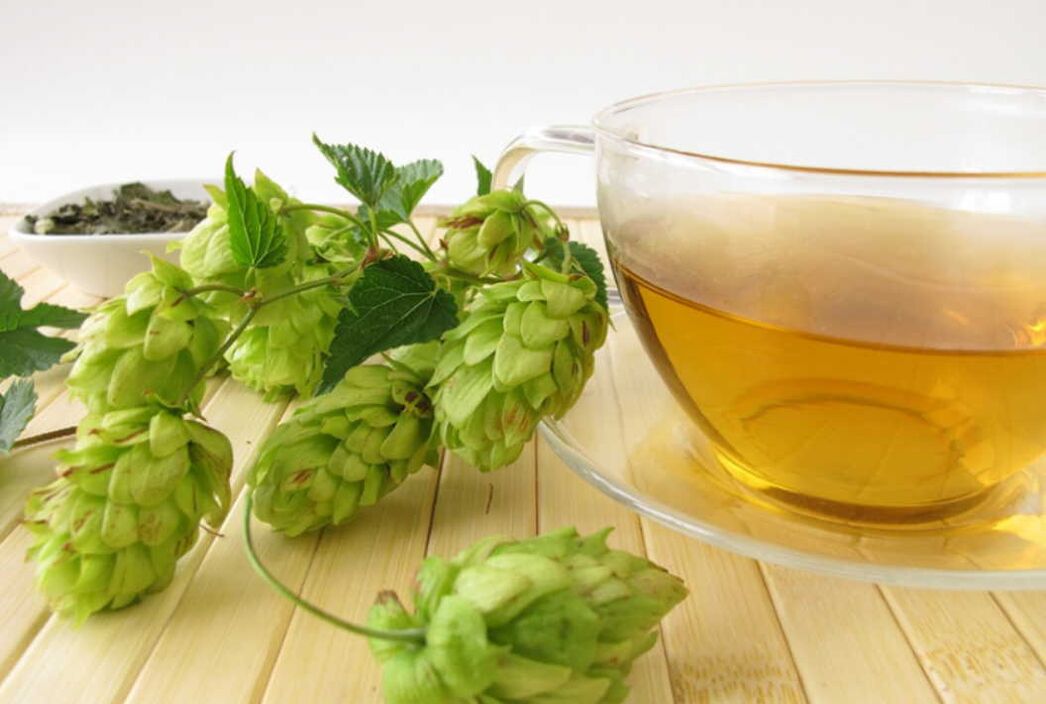
A mixture of garlic and honey
To prepare the mixture, mash 250 g of garlic with 400 g of honey and leave to infuse for 2 weeks. This mixture should be consumed 2 times a day 30 minutes before meals, 1 tbsp. L.
Cabbage in the treatment of diseases of the veins
To treat varicose veins, spread a cabbage leaf with honey and apply it to the sore spots, wrap everything with cling film and leave for 2-3 hours. This procedure should be done regularly 1-2 times a week.
Note! All patients with varicose veins should be under the supervision of a phlebologist. Folk remedies for the treatment of varicose veins can help prevent the disease or relieve its symptoms. In advanced cases, varicose veins in the legs are treated with medical preparations.
Treatment of varicose veins with drugs
Drug therapy is an important component in the treatment of varicose veins, especially in severe form. Properly selected drugs significantly reduce the risk of complications in patients such as pulmonary thromboembolism, varicose eczema, thrombophlebitis.
Usually their action is aimed at thinning the blood, improving blood circulation, eliminating swelling and pain.
In addition, drugs help solve the following problems:
- improvement in the tone of the veins;
- improvement of lymphatic outflow;
- improvement of blood circulation;
- elimination of inflammatory processes.
Medicines not only relieve the patient of unpleasant symptoms, but with regular use they will completely cure the disease.
Note! Only a doctor can prescribe drugs for the treatment of varicose veins after a thorough examination!
Prevention of varicose veins in the legs
As for the prevention of the disease, it is recommended to avoid heavy loads on the legs, while sitting it is necessary to change posture as often as possible. In addition, you need to do light exercises, such as walking on tiptoes, climbing stairs, jogging 2-3 km a day, cycling. Women are advised not to often wear heels more than 4-6 cm high, skinny jeans and pantyhose, which can impair blood circulation in the leg veins.
Note! The best prevention of this pathology is a careful attitude to your body. When the first symptoms appear, you should consult a doctor as soon as possible and start treatment.
Only a phlebologist can adequately assess the condition of your veins and determine the stages of varicose veins. Paying attention to the disease in the early stages, the doctor will prescribe you a treatment for varicose veins without surgery.
Diet for varicose veins
How to get rid of varicose veins with a diet? Phlebologists say that by eating certain foods, a person can both improve her condition and aggravate the course of the disease.
With varicose veins, doctors recommend eating blood-thinning foods as much as possible. These include currants, garlic, onions, olive oil, cherries. If you have the opportunity, consume these foods every day. In cooking it is recommended to use spices such as cinnamon and ginger.
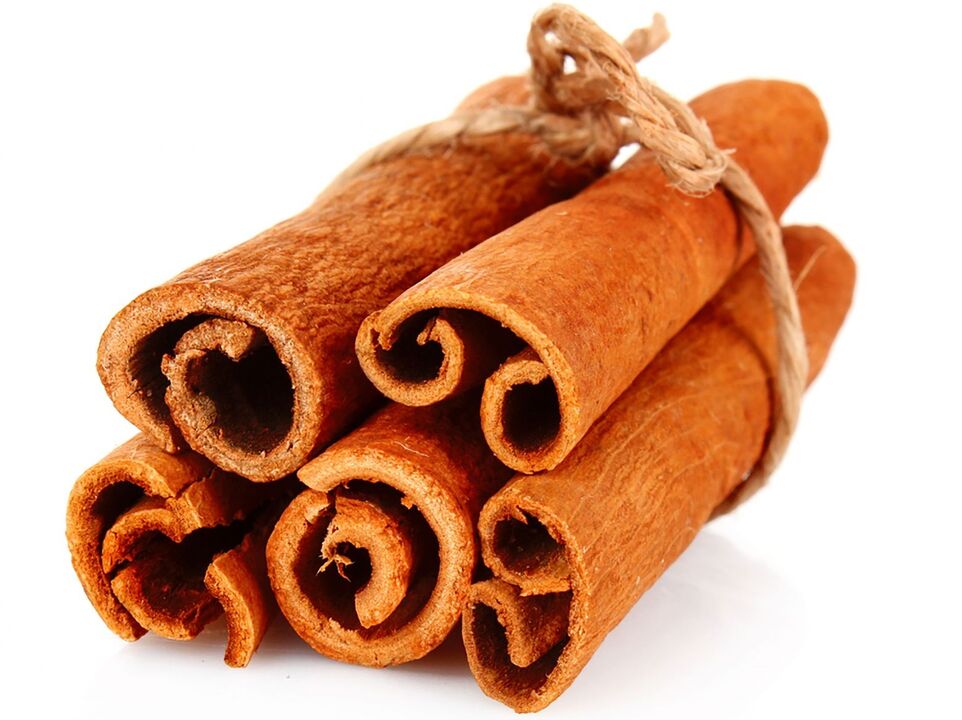
However, proper nutrition for varicose veins does not guarantee that you will completely get rid of the disease. In addition to proper nutrition, it is necessary to perform light physical exercises for varicose veins. They will help you lose weight. After all, varicose veins, as a rule, occur in overweight people. The diet must be selected together with the attending physician. Ideally, if it helps strengthen blood vessel walls, thin the blood and lose weight.
Exercises for varicose veins
No matter how modern and good the medicines are, they will never be able to normalize the pressure in the lower limbs. In this case, only exercises for varicose veins can help.
Note! Before doing exercises for varicose veins, experts recommend putting your feet on a pillow and lying down for 5-10 minutes. This is done to normalize blood circulation.
- Bike. Lie on the floor with your back and lower back pressed firmly against it and begin pedaling in the air. Choose the speed of the exercise yourself, however, it is not recommended to overload.
- Vertical scissors. Lie on the floor and stretch your arms along your body. Cross your legs during the exercise. Try not to let yourself hold your breath right now. You can choose the pace of the exercise yourself.
- Exercise for the lower legs with varicose veins. Rotate your feet in different directions, bend them and straighten them. You can rotate them clockwise and then counterclockwise, then up and down. This exercise can be done with each leg separately, or you can do both at the same time. The advantage of this exercise is that it can be performed during working hours, under the table before taking off your shoes.
- Semi-print. Lie on the floor, put your hands behind your head, bend your knees. As you inhale, try to lift your torso as high as possible and, as you exhale, take the starting position. This exercise should be repeated 5-10 times, depending on the fatigue.
- Onion. Lie on your stomach with your arms extended along your torso. Try to lift your chest and legs at the same time. Do the exercise 10-15 times.
After performing these exercises, it is recommended to use a contrast shower.
Note! Exercises for varicose veins will benefit only when performed regularly, combined with the use of recipes and drugs of traditional medicine.
Varicose veins are a serious disease that requires complex and long-term treatment. Therefore, it is better to prevent it than to cure it.


















